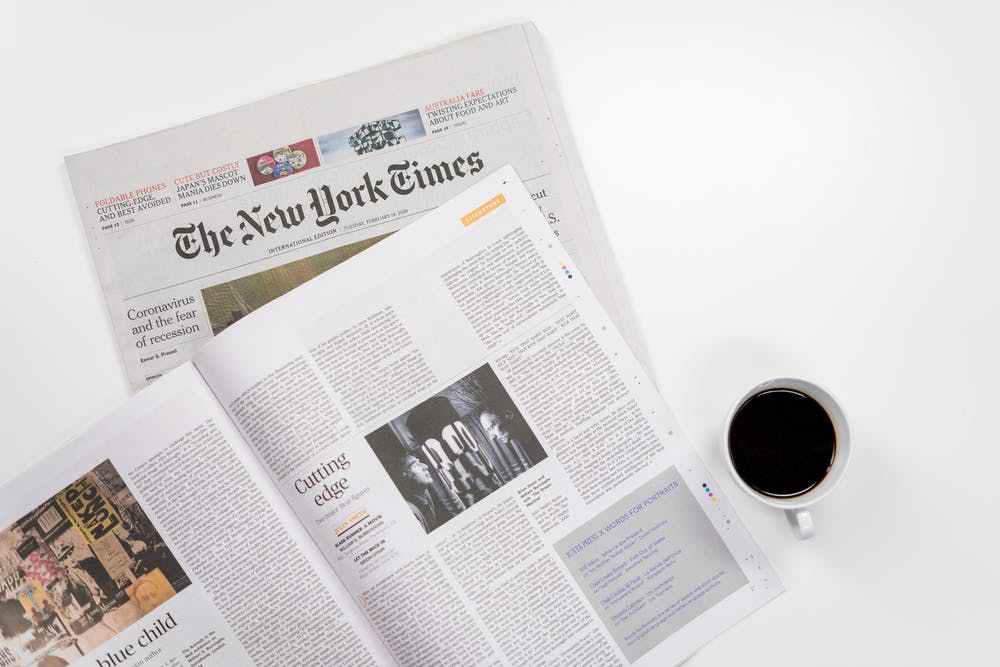What is the secret combination to unlock a spot on the coveted New York Times best-seller list?
Believe it or not, there is a certain formula to finding your book amidst some of the nation’s best-selling authors, and it’s not just huge sales numbers. While success is not guaranteed, a behind-the-scenes look demystifies the ever-enigmatic selection process of the New York Times (NYT) best-seller staff.
Every Wednesday at 7:00 p.m. Eastern time, the New York Times best-seller list is published online. It’s then published in print eleven days later. While sales numbers are a factor in making the list, according to the best-seller staff at the New York Times, they also employ investigative journalism and other subjective measures to dole out the highly selective spots on the list.
Here are the basic facts of the list straight from the Times:
1. Each week, several thousand vendors confidentiality report sales data in myriad genres and interests in the United States. Large press, small press, and self-published titles are eligible for the list.
2. Data on millions of titles is reported from bookstores (including independent), online retailers, and specialty stores.
3. Print and/or ebook titles can be included; both formats are allowed. Audiobooks are included, based on the combination of both physical and digital copies.
4. Sales are defined as completed purchases by the buyer.
5. Books such as perennial sellers, class books and textbooks, journals, crosswords, ebooks available exclusively from a single vendor, etc., are not included in the list.
6. There are eleven weekly lists and seven monthly lists.
7. A book can be featured on the best-seller list and not in the Book Review, and vice versa.
8. Books published during a busy publication week face harder competition than books published during down times.
9. The best-seller staff is responsible for employing investigative journalism in order to detect manipulation or fraud. Parties frequently buy bulk orders of books in order to skew sales data. This practice is not illegal, but the NYT actively investigates circumstances to more accurately reflect the sales data.
10. The best-seller staff does not read every book they choose to reflect and rank on the charts; according to the NYT, sales data is the only factor.
However, in a lawsuit, the New York Times was sued for neglecting to reflect certain books on the charts. Their response is a direct hit at the claims of objectivity: “The list did not purport to be an objective compilation of information but instead was an editorial product.” Therefore, it must be noted that even after the vetting and research, the New York Times best-seller list is ultimately an editorial—subjective—list, rather than an all-encompassing objective reflection of current book consumers. The confidential reporting aids in reducing pressure on booksellers, but it still shades the number of actual reports the Times receives.
While not reported by the Times themselves, here are a few other “tricks” to get on the list as reported by Entrepreneur:
a. Preorder campaigns are extremely valuable. In order to reach the list, it is generally understood that a book needs over ten thousand preorders for consideration.
b. While five thousand copies purchased after publication could mean a spot on the list, most times five thousand does not apply for new and/or unknown authors. Further, those numbers over a week of sales mean more than the gross total of sales in a year.
c. The more mainstream press coverage a book receives, the more likely it is to be featured.
d. Legitimate bulk sales of books may flag the title as fraudulent during the NYT investigative process.
e. It is also reported that more reported sales selected by the Times come from independent bookstores rather than storefronts or online retailers. This can skew the readership, since books purchased at an indie bookstore could differ from what the masses are purchasing elsewhere at different prices.
Some best-seller lists include the Wall Street Journal and the USA Today best-seller lists. The former requires around three to five thousand copies, makes it easier for nontraditional published works to get featured, and is purely based on sales. The latter is more similar to the New York Times list in that it is curated to an extent, but it can include books excluded on the NYT list like cookbooks and game books.
Overall, award list notoriety can be dazzling, but it can also be a disappointment if that is the only baseline for success. For indie books, it is often better to focus on smaller literary awards, local awards, or other local press. The New York Times best-seller list is a good baseline for seeing what is selling from week to week, but it is not the end-all-be-all of the current publishing landscape. There are several thousand books that will never make the list, but will still win awards, win hearts, or just win support from your closest friends and family.

